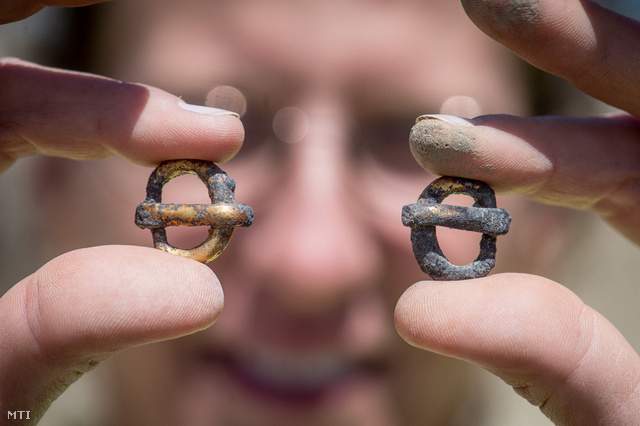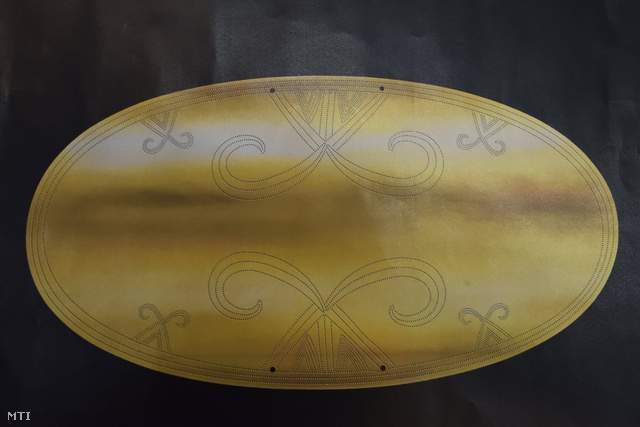Hundreds of Bronze and Copper Age relics revealed recently

Multiple hundreds of artefacts from the Árpád era have been revealed during the excavations near expressway M44 between Tiszakürt and Kondoros, claims MTI.
The experts of Tessedik Sámuel Museum are undertaking archaeological work on 110 square meters at 12 digging sites, according to Travelo.hu. More than seven hundred artefacts have been revealed so far. The greatest discoveries are the silver jewelries, which were found in a late Sarmatian graveyard from the 4th century AD. Though almost all the tombs have been raided, the experts managed to salvage some valuable relics.
Toiler utensils and bronze tweezers were found in a woman’s grave next to the skull, and also four hollowed silver coins that were probably sewed on a corolla. The coins were Sarmatian copies of Roman ones, and they were not used as currencies but as jewelry.
The archaeologists noted that tomb raiders did their work quite brutally. When they reached the level of the remains by digging, they put a tool into the coffin and pulled out what stick to it. They stole everything from the dead. This is the probable reason that the different parts of the skeletons lie in different places. But this is also the reason why the pots at the feet of the dead remained.
Damjanich János Museum did excavations in Jász-Nagykun-Szolnok County, Tessedik Sámuel Museum in Szarvas and Békésszentandrás, Munkácsy Mihály Museum in the other parts of Békés County.

They have found tombs in Békésszentandrás where the graves were not disturbed. Bronze earrings, pearls, different fibulas, pearl bracelets, belts with pearls and ceramic pots were revealed there.
Munkácsy Mihály Museum’s chief archaeologist stated that they are working at 10-12 sites and in Szarvas as well. The oldest artefact they have found was 7000-7500 years old. They have excavated hollows that were dig during harvesting clay, and they have found chipped stone tools inside them which were probably made of materials from Tokaj.
They have found a rattle with the form of a human head from the Avar era. A similar object was found in the early 1900s in Szentes. The rattles were probably worn on the belt. It is not likely that the Avars wore such accessories, so this artefact might witness the earlier “fashion” of the Germanic tribes.
The excavations might be finished by the end of August, and the experts are planning to publish a book about the findings.
Hungarian archaeologists have no reason to complain: they have found a tomb from the Attila era near Kecskemét, then they found a golden leg armor from the Bronze Age, which was shown to the audience on the Night of Museums.
Sarmatian artefacts and some other ones from the time of the Homefounding have been found near the border of Dusnok. The archaeologists of Viski Károly Museum in Kalocsa and Türr István Museum in Baja were working together, when they have found two Sarmatian tombs full of female jewelry and tools at Dusnok-Halom.

A museum supporter’s artefacts gave the idea of the excavation, as he brought a Sarmatian enamelled fibula and a trapping with silver rosettas.
It was also an important aspect that they have found unrobbed graves. It was revealed during the excavation that a Celtic site can also be found under the Sarmatian graveyard. The value of the field is increased by the fact that the traces of three cultures and a thousand years were found there.
The remains of a late Bronze Age funeral were brought up during the excavation: an adult skeleton with a nicely elaborated pot and a decorated bronze pin.
Besides these, Celtic objects and traces of a Copper Age funeral were revealed. Human bones and bigger pot fragments were also found there from the 4th millennium BC. Archaeologists claim that the hill was constructed by piling dirt upon the Copper Age graveyard.
The importance of the latter one is that they managed to observe the wooden structure of the tomb chamber at the bottom of the pile. Even though the tomb has already been raided, they have found a golden disk along with the bones and pottery fragments. No such artefacts from the Copper Age were found there before, but these relics show parallels to the ones found in Varna, Bulgaria.
As we wrote, the traces of a new mass grave were discovered by the experts of Móra Ferenc Museum in the area of a sand mine. The tracks were noticed during an excavation related to the construction of a bypass road around Hódmezővásárhely.
Ce: bm
Source: Travelo.hu





